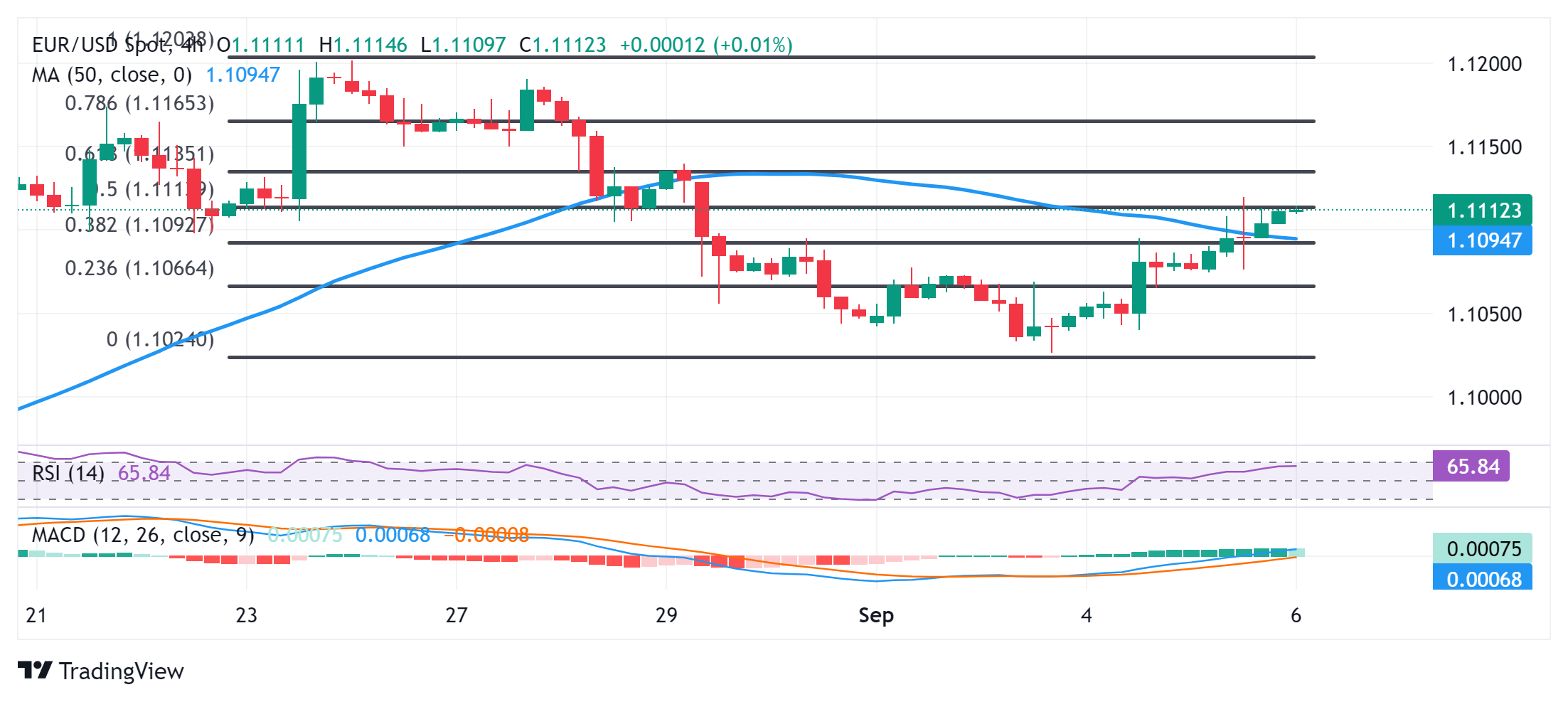- EUR/USD consolidates its recovery gains from over a two-week low touched Tuesday.
- Investors keenly await the US employment details before placing fresh directional bets.
- The setup favors bullish traders and supports prospects for a further appreciating move.
The EUR/USD pair struggles to capitalize on its gains registered over the past two days and oscillates in a narrow trading band during the Asian session on Friday. Spot prices, meanwhile, manage to hold above the 1.1100 round figure, nearly unchanged for the day as traders opt to wait for the release of the US Nonfarm Payrolls (NFP) report before placing fresh directional bets.
From a technical perspective, the recent recovery from the 1.1075-1.1070 area, or over a two-week low touched on Tuesday, stalls near the 50% Fibonacci retracement level of the latest corrective slide from the YTD peak touched in August. That said, the overnight breakout through the 1.1090-1.1095 confluence resistance – comprising the 38.2% Fibo. level and the 50-period Simple Moving Average (SMA) on the 4-hour chart – favors bullish traders.
Moreover, oscillators on the daily chart are holding in positive territory and are still far from being in the overbought zone. This, in turn, validates the positive outlook and suggests that the path of least resistance for the EUR/USD pair is to the upside. Bulls, however, need to wait for a sustained move beyond the 50% Fibo. level resistance before placing fresh bets and positioning for further strength towards the 61.8% Fibo. level, around the 1.1135 region.
The subsequent move-up should allow the EUR/USD pair to aim back towards retesting the YTD peak, around the 1.1200 mark touched in August. Some follow-through buying will confirm a fresh breakout and lift the EUR/USD pair further towards the 1.1240-1.1245 intermediate barrier en route to the July 2023 swing high, around the 1.1275 region.
On the flip side, the 1.1095-1.1090 confluence resistance breakpoint now seems to act as immediate support ahead of the 23.6% Fibo. level, around the 1.1070-1.1065 region. A convincing break below the latter will expose the weekly low, around the 1.1025 area touched on Tuesday, before the EUR/USD pair drops to the 1.1000 psychological mark. The latter should act as a pivotal point, which if broken might shift the near-term bias in favour of bearish traders.
EUR/USD 4-hour chart

Economic Indicator
Nonfarm Payrolls
The Nonfarm Payrolls release presents the number of new jobs created in the US during the previous month in all non-agricultural businesses; it is released by the US Bureau of Labor Statistics (BLS). The monthly changes in payrolls can be extremely volatile. The number is also subject to strong reviews, which can also trigger volatility in the Forex board. Generally speaking, a high reading is seen as bullish for the US Dollar (USD), while a low reading is seen as bearish, although previous months’ reviews and the Unemployment Rate are as relevant as the headline figure. The market’s reaction, therefore, depends on how the market assesses all the data contained in the BLS report as a whole.
Read more.

























